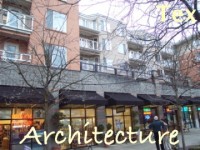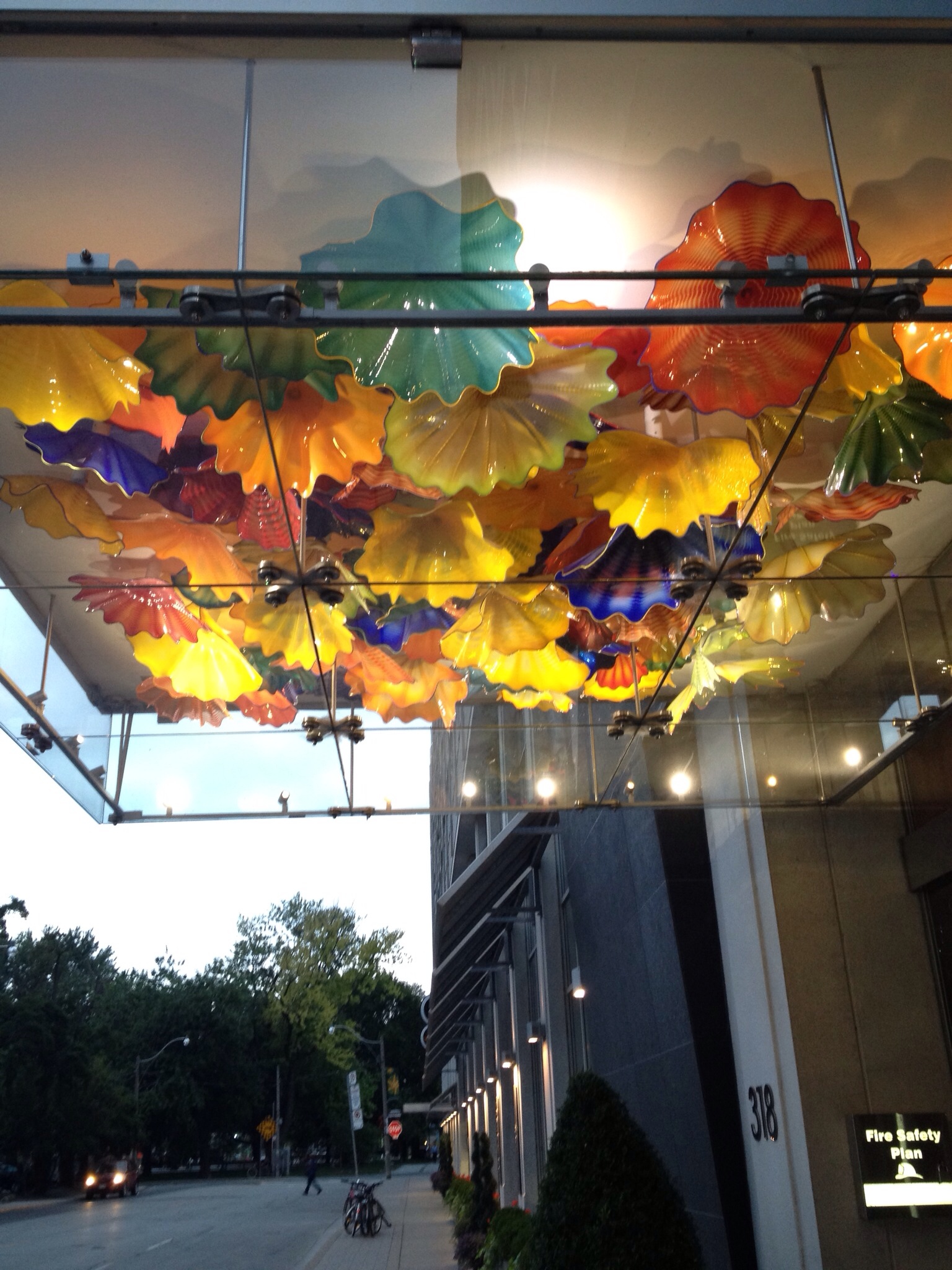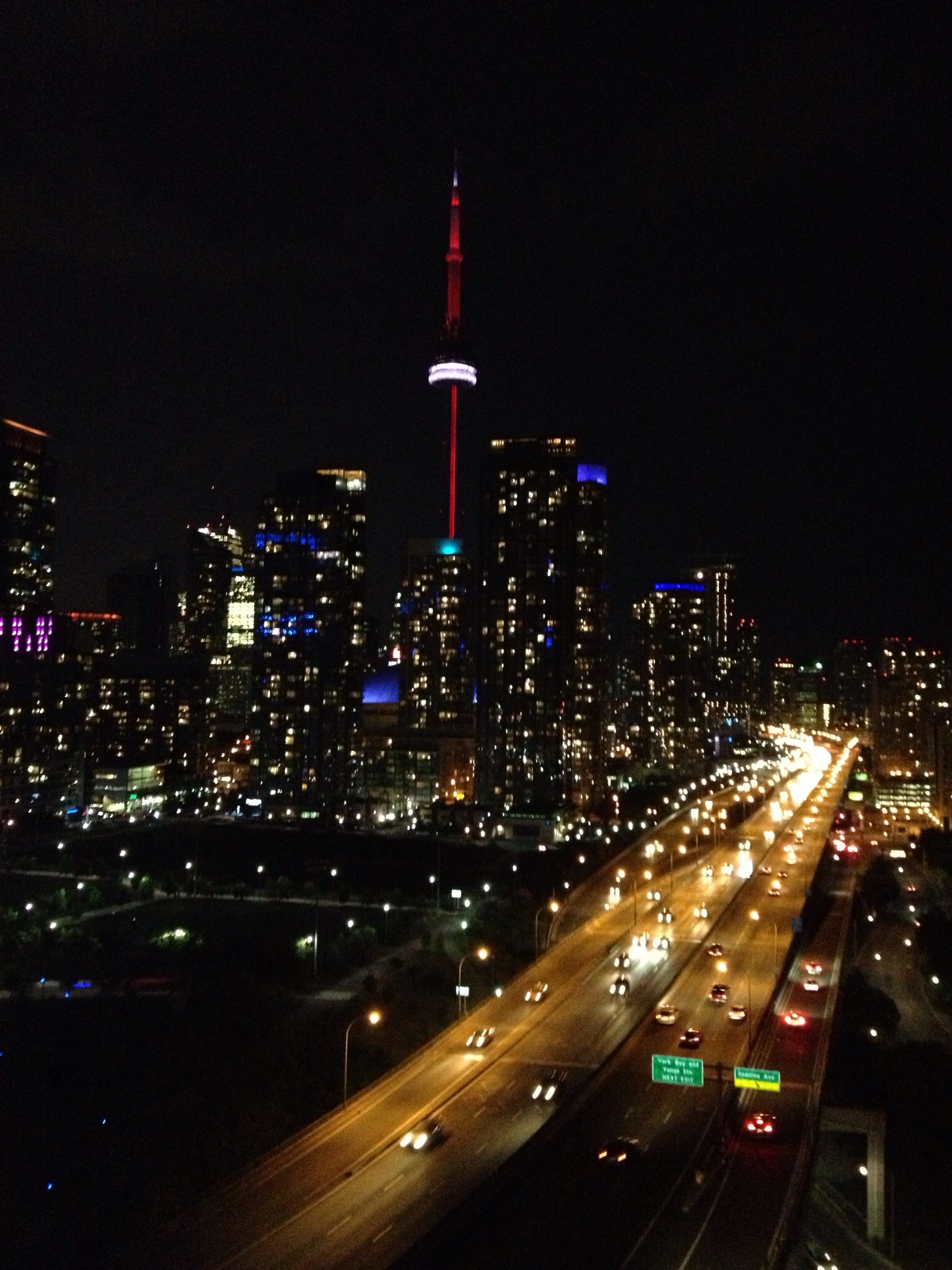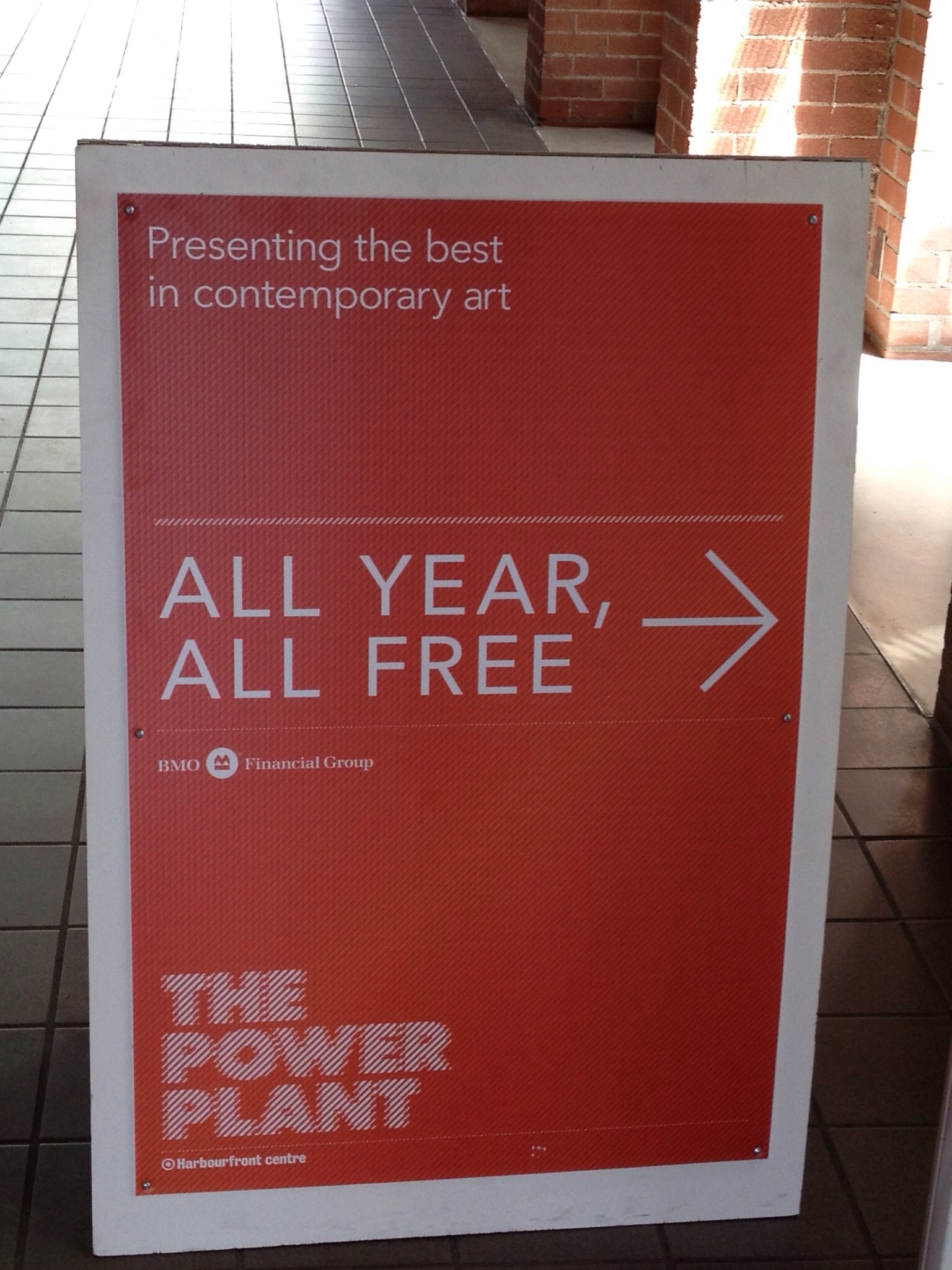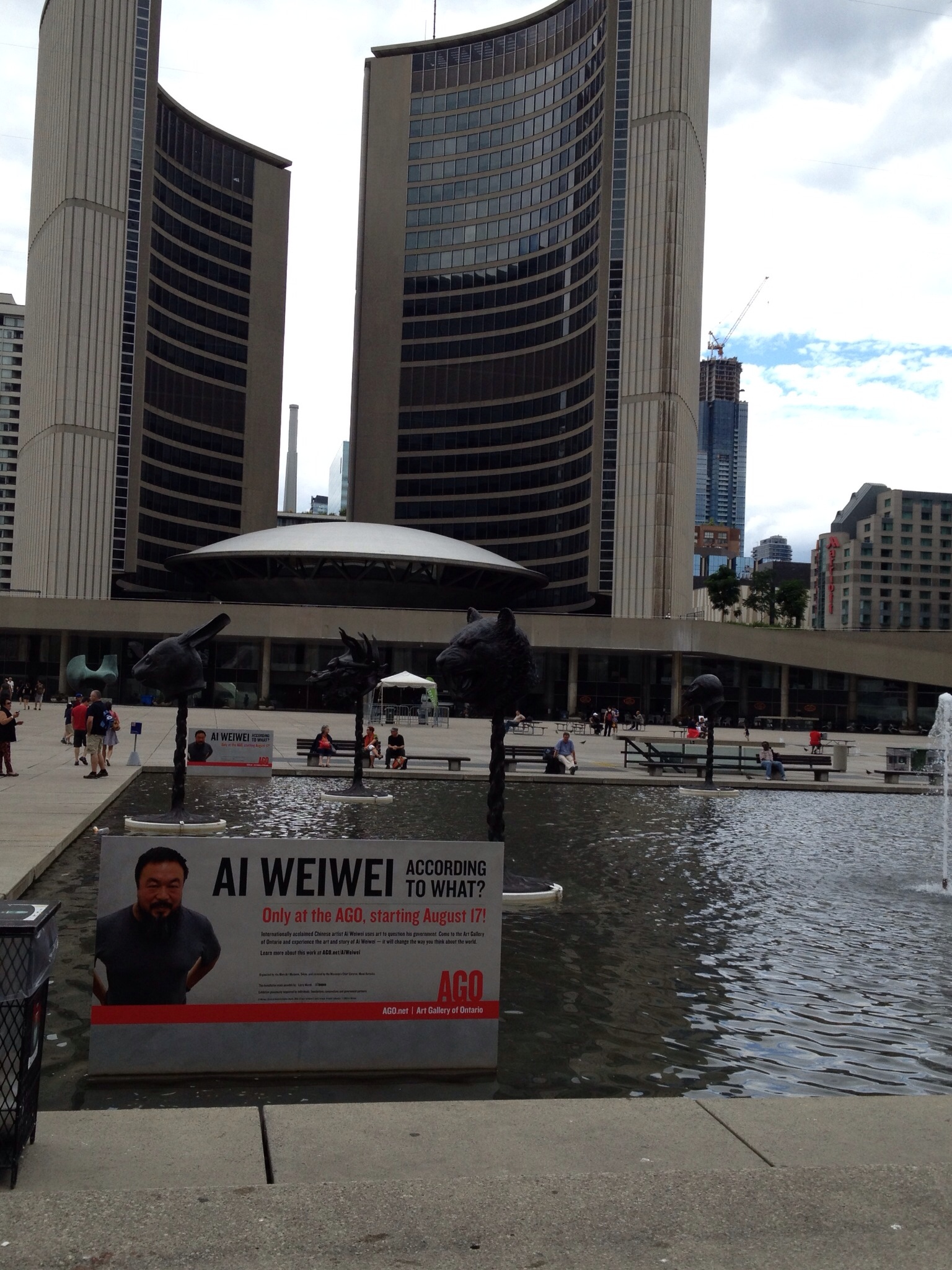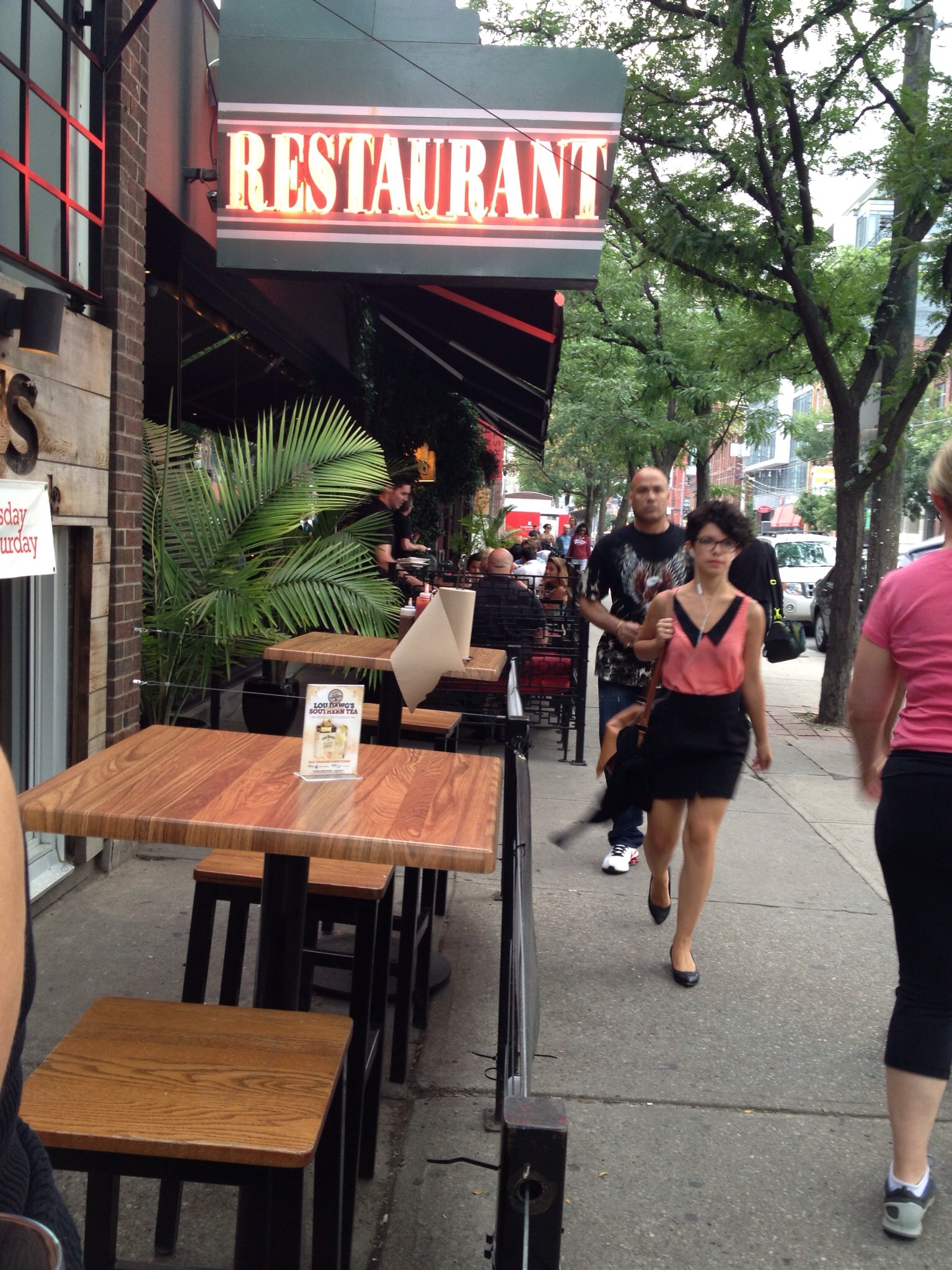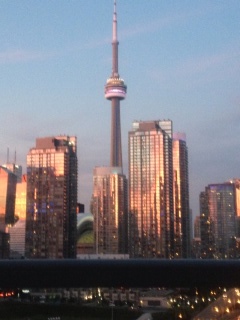Observations from our visit to Toronto in August, 2013.
We had the privilege of learning some Toronto planning history from Eudora Pendergrast, a friend and ex-urban planner with the City of Toronto.
Toronto has many diverse neighborhoods–Chinatown, Kensington Market, Little Italy, Distillery District, Corktown, to name a few–all of which maintain vitality. There is no slum, no area tourists are warned to stay clear of. In fact, Ms. Pendergrast states that through the later-20th century suburban expansion, central (“Old”) Toronto has maintained its desirability as a place to live. Many Torontons prefer living in the core city, and are only driven out by high housing prices.
How does Toronto do this? By upholding a “neighborhoods first” planning policy. The street grid is sacred, and only a major civic amenity can justify interruption. Neighborhoods are active participants in the planning process through neighborhood councils. Jane Jacobs, a longtime Toronto resident until her death in 2006, is a high priestess for modern city planning with her emphasis on building neighborhoods around daily urban life rather than building a city through grand economic schemes or job creation.
In addition, Toronto has a workable mass transit system and continues to invest in mass transit. Street cars and a subway form the heart of the system, but bikes (yes, even in winter!) and protected pedestrian passageways are important and much-used components. Traffic jams from heavy car use are regular occurrences–in what big city aren’t they?–but Torontonians have alternatives.
How does Toronto plan the public realm so evident in the city? According to Ms. Pendergrast, every development application is the beginning of a negotiation between city and developer. In other words, we’ll grant you an entitlement to build something; what public amenity or benefit will you provide in return?
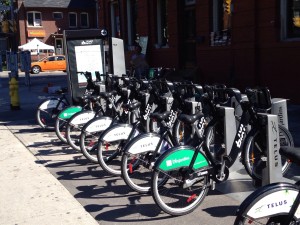
BIXI bikes–Toronto’s citywide bike rental system. You can borrow a bike or drop one off throughout the city.
Growth, planning and development are controversial subjects in Toronto and continue to be the focus of heated public debate, especially since the 1998 “amalgamation” of Toronto with its surrounding suburbs. Planning, leadership and a city’s future are never guaranteed. But vigorous public engagement, along with a few visionary leaders, have worked to create a remarkable public realm in Toronto and promise well for Toronto’s future.
Do Torotonians pay high taxes? First, “high” compared to what? Second, the question might be better phrased as, “Do Torontonians get good value for the taxes they pay?”
In answer to the first question, Toronto’s taxes fall somewhere between New York City’s and Chicago’s, in one Canadian’s rough estimate. It’s very hard to get an apples-to-apples comparison without making this a master’s thesis so let’s rely on his web-post analysis.
The answer to the second question is more convoluted. Here’s some background.
First, the funding story: Torontonians, as Ontario residents, pay the HST of 13% on most goods and services. HST stands for “harmonized sales tax” and represents the sum of national and provincial value-added taxes. A portion of this tax comes back to Toronto from Ontario as various grants and program funds. Toronto relies primarily on property taxes to fund local government and has an annual operating budget of about $10B. Property taxes approach 0.8% of property value per year–this includes school and municipal operations (Brookhaven property taxes are about 1.2% of property value)–contributing around $4B or 40% of the annual operating budget. Provincial transfers amount to about $2B or 20%, with fees, federal funds, and other revenues making up the balance. This equates to about about $3,800/citizen (pop. 2,615,000).
By comparison, Atlanta’s 2013 operating budget is $542M, or $1,290/citizen (pop. 420,000) while Brookhaven’s is $16.5M, or $335/citizen (pop. 49,000).
This is not an apples-to-apples comparison as Toronto provides social services, amounting to 1/3 of their budget–services that are largely funded by the state and federal government in Georgia. After accounting for this, Toronto’s per citizen expenditure is still about twice that of Atlanta.
Do Torontonians consider this a good value? Hah! That depends on whom you ask, of course. They grumble about taxes just like most Atlantans. They are very proud of their city, however, and tend to stay put, and look forward to showing it off to the world when they host the 2015 Panamerican Games. They are also, along with other Canadians, very proud of their health care system (which is federally funded), and, according to Ms. Pendergrast, view the US debate on Obamacare with puzzled amusement.
The most striking thing to this visiting Atlantan is Toronto’s emphasis on the public realm. Miles of waterfront are lined with parks, paths, boardwalks and public buildings. Public art is everywhere you look. Street cars, pedestrians, cyclists, dogs and baby strollers populate the sidewalks. Plazas or small squares welcome one to the front door of buildings of public import, like City Hall, Ontario Parliament, the Rogers Center and CN Tower.
This emphasis on the public realm, which implies a high level of public investment and taxes, does not fight with Toronto’s place as Canada’s financial capital, home to Canada’s version of Wall Street and most major investment banks. Tall bank headquarter buildings–including one wrapped in gold glass–stand prominently throughout the downtown area. Nor does it restrain development of condo towers, with 57,000 new condo units currently under construction, mostly in high-rise buildings, including one tower aiming to claim the “tallest building in Canada” designation. Toronto welcomes 50 new residents every day. Apparently, Torontonians do not buy into the high-taxes = undesirable-to-business + undesirable-to-live equation.
Toronto’s recent emphasis is redevelopment of the Lake Ontario shoreline. “Harbourfront,” a 100 acre stretch along the water in the heart of Toronto, began in the 1970’s when the Crown (national government) gave Toronto railway land to re-design as public waterfront. After many plans and much controversy, 40 acres were retained as park space and walking trails while the other 60 acres were released to private developers for low-density, pedestrian-oriented development to help fund the project. Today Harbourfront is the civic heart of Toronto, a place for Torontonians to stroll and meet, and home to many festivals, art galleries and music events.
What’s the 4th largest city in North America and the most international city in North America and the city where the longest road in North America starts? Why, that would be Toronto, Ontario, Canada–at least as our T’ronto (skip the “o” if you go native) tour guide tells us. You can check it in Wikipedia. One might infer a Canadian desire to embellish, as the forever-little sibling to big brother USA, but this might be wrong as T’rontons seem at ease with who they are.
No matter what Stephen Colbert says, after 1-1/2 days in this delightful city, we can unreservedly say that Canadians are COOL! The streets are full of people, friendly and unpretentious people, on foot and on bikes, walking dogs, pushing strollers, chatting with friends. Construction projects are everywhere, particularly new condo towers and new streetcar tracks. Unique neighborhoods, often only a few blocks in size, reside side-by-side throughout the city, with plentiful eateries of all shapes and sizes. People of color and varying ethnicity abound, which is a point of particular pride to T’rontons.
It’s a good thing our rental car is due back in Detroit in a few days. We like T’ronto so much and there’s so much to do that we’d be tempted to stay….at least until the snow flies. We’re curious though–how would snow and 10 degree temps affect the charm of this distinctly Canadian big city?
Torontonians make many acerbic observations about their government and politicians, never more so than now with a mayor, Rob Ford, who seems to prefer pursuing a reputation as a bon vivant than as leader of Canada’s largest and most dynamic city. At the same time, they–as seems typical of Canadians–have an implicit faith in government to solve major problems and deliver social services. They may argue at the margins–what level of services and what cost–but they seem to be in general agreement that the overall scheme is worthy. For their investment, they have a world-class city, an international city, with a rich and full civic life.
In Georgia, we tend toward distrust of government. Our taxes are low and our public investment is low. We pay reasonably little and get reasonably little in terms of our public realm. We desire to be seen as a world-class city, yet we have a bare bones transit system, widely divergent areas of economic ability, spotty education and less public space per capita than most major American cities. Only good government and adequate resources can address these large-scale issues.
Is it true that Georgia government can’t be trusted? Or are we unwilling to pay the taxes it may take to change these characteristics? Is what we choose a good value proposition?


